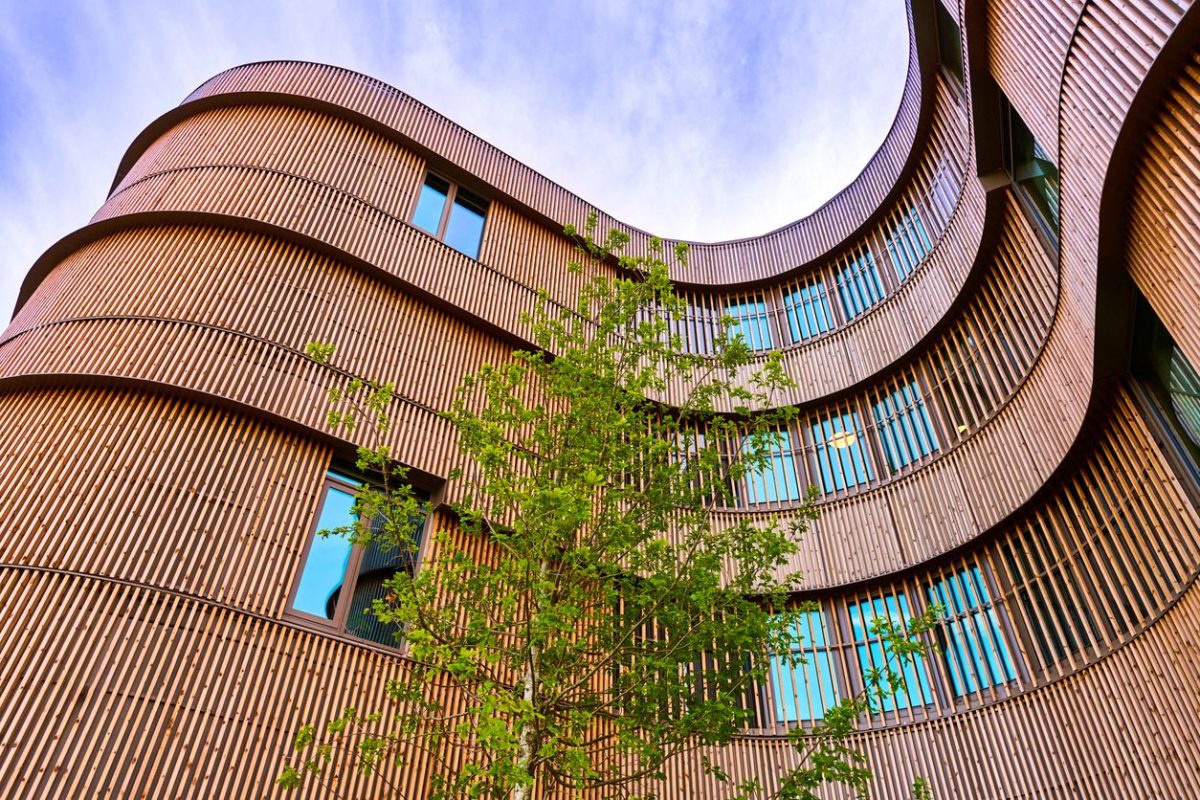Building Smarter in Muskoka
By Peter Sale | October 11, 2025

Last Friday, I saw some innovative buildings constructed from wood products. Single family homes, townhouses, condominiums, libraries and theatres, nearly all in Europe. I saw only images, during one of the excellent talks at the 2025 Muskoka Summit on the Environment held at the Muskoka Lumber Community Centre in Bracebridge.
Chris Magwood, from Rocky Mountain Institute, was talking about low carbon construction as a way of cutting our carbon footprints to mitigate climate change. His talk was informative and stimulating, as were the rest of the presentations that day. Do you know that construction and operation of buildings worldwide contribute 39% of all greenhouse gas emissions, or that one quarter of those emissions occur during construction?
Present methods of construction in Ontario produce substantial quantities of greenhouse gases, and of construction waste. We could use the same raw materials, manufactured into different products that would mean less waste, less energy use in construction (all the way from harvesting materials to final delivery of the building), and more carbon stored long-term in the building products used. Innovative timber products do an excellent job of sequestering carbon for the life of the building.
Over the weekend, I saw more news items regarding Canada’s current problems with exporting dimensional lumber to the USA. Trump’s tariffs are raising prices and cooling demand.
And then I put two and two together. Instead of continuing our traditional extraction of raw materials for export often to be turned into finished products overseas, why don’t we process more raw products ourselves, some for export and some for innovative construction here? True, Canada’s production of manufactured wood products has almost tripled in value in the last decade, while the total value of the forest sector has been more modest. But we are still building mostly the old-fashioned way.
In the Muskoka region we face a crisis in affordable housing while also supporting a construction industry building elaborate and expensive second (or third) homes. The great majority of this construction is still conventional, fabricated-on-site, timber frame buildings with resulting waste and inefficiency.
Wouldn’t it be wonderful if this region became a place where we innovate, creating buildings that are architecturally stunning, efficiently built, modular and using factory pre-fabrication where practical, using the latest, predominantly natural products, and even affordable? We need buildings that reduce the emissions causing climate change. Buildings that use low-VOC products and are healthy environments for people. Buildings that are more fire-resistant. And, yes, buildings that make an architectural statement or three – after all, we often build in magnificent settings that deserve architectural flourishes.
All of these things can be possible if four things happen: 1) Our builders seek out the innovations occurring around the world and suggest them to their clients. 2) Our architects and designers are up to date and promote the best, most environmentally friendly ways to build. 3) Our municipal planning departments encourage innovation and bring new technologies and approaches to the notice of the construction community. And 4) clients welcome new ways of building that minimize the assault on climate while maximizing enjoyment of the finished product.
Innovation can sometimes be expensive but it does not have to be, and innovation that increases up-front costs while markedly reducing operating costs can pay for itself quite quickly. As for our real need for affordable housing – what could be better than housing that has low operating costs and is built from long-lasting materials?
The main question is are we ready to become a community where innovative solutions to construction and operation of buildings, use of climate-friendly products and construction techniques, and creative, thoughtful architectural design become the norm? Do we have the wisdom, as a community, to see the construction sector as one of the major ways to mitigate climate change, and to find ways to encourage this evolution towards building smarter across our region. I think the Muskoka region may be ready to lead on construction approaches for our changing world.
This article is No 18 in Muskoka Watershed Council’s current series, Living Smarter in Muskoka. Author of the article and editor of the series is Dr Peter Sale, former marine ecologist, part of the Muskoka River watershed for the past 19 years, and Director and former Chair of MWC.

First Published by MuskokaRegion.com
